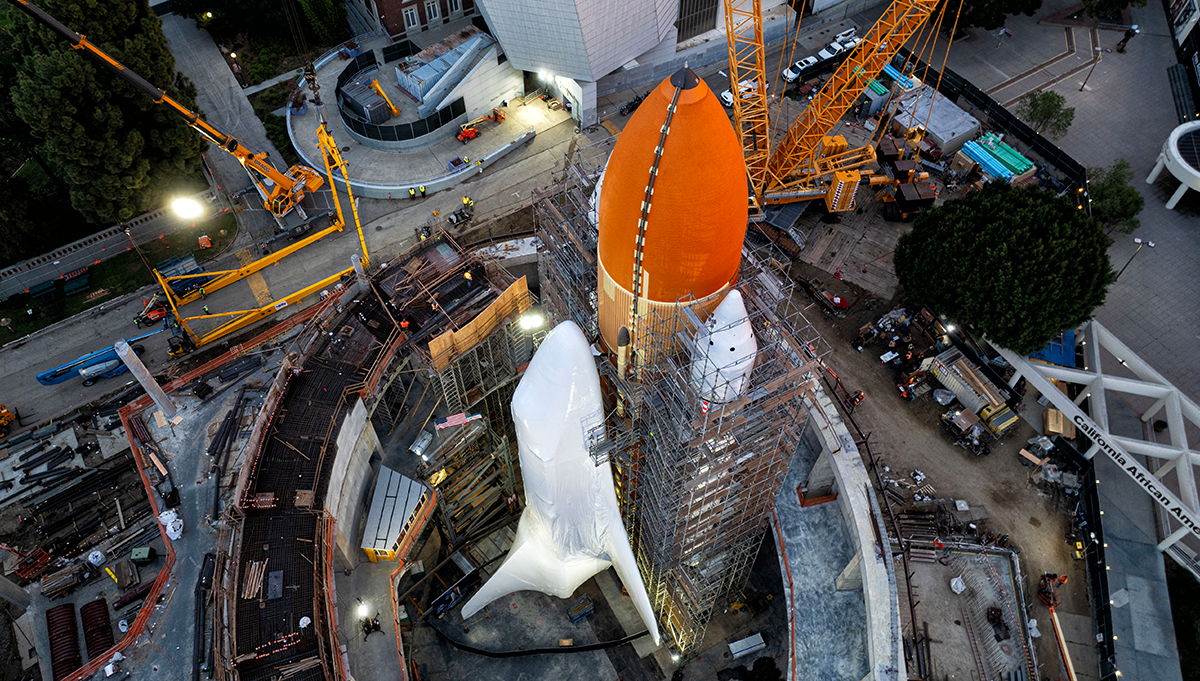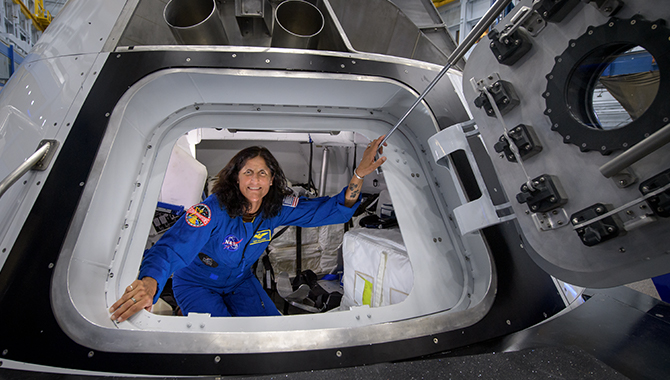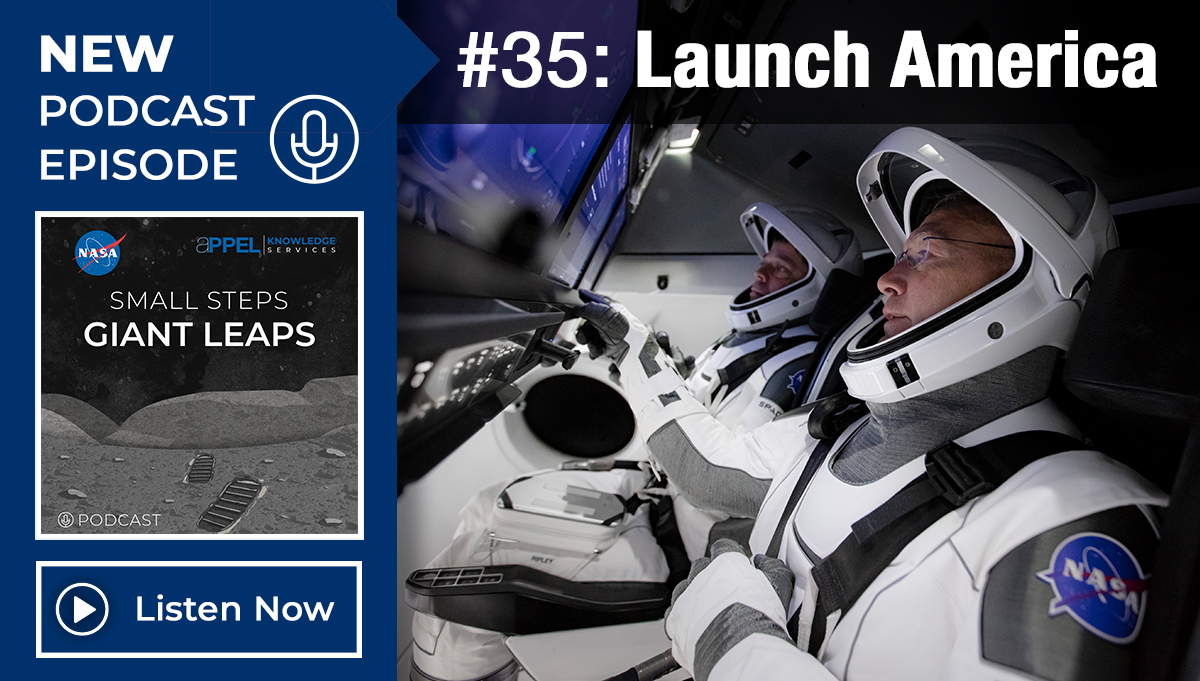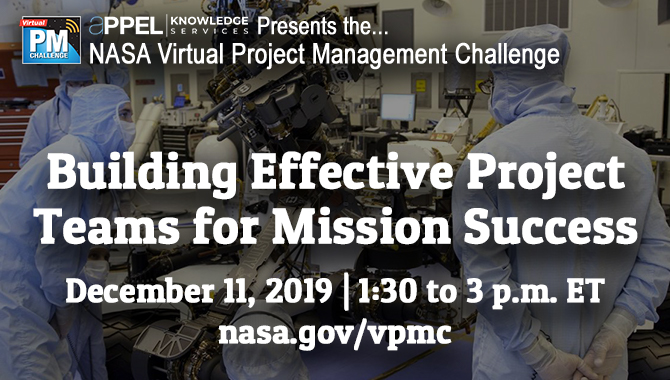
A Falcon 9 rocket with Dragon cargo spacecraft are vertical at Launch Complex 39A at NASA’s Kennedy Space Center in 2017.
Credit: SpaceX
New capsule will be capable of carrying U.S. astronauts to the International Space Station.
Early in the pre-dawn hours of March 2, NASA and SpaceX plan to begin the next phase of the U.S. space program, launching the new Crew Dragon capsule atop a Falcon 9 rocket. It will be the first test of the capsule, a modified version of the Dragon cargo capsule that has been successfully servicing the International Space Station (ISS) since 2012.
The mission, known as Demo-1, is scheduled to liftoff at 2:48 a.m. from storied Launch Complex 39A at Kennedy Space Center. Apollo 11, which carried the first humans to walk on the Moon, launched from Complex 39A on July 16, 1969. And, just as the Mercury, Gemini, and Apollo programs all benefitted from uncrewed test flights, Demo-1 will be uncrewed, as well.
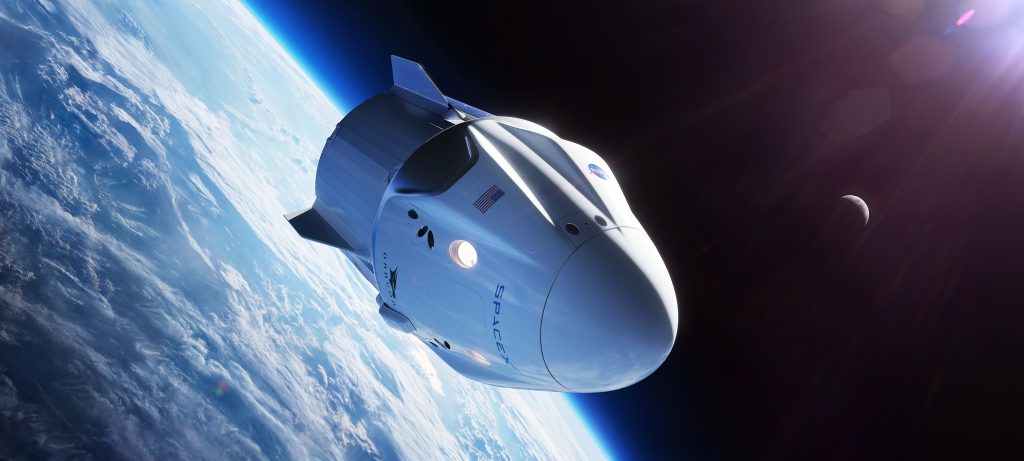
In this illustration, a SpaceX Crew Dragon spacecraft is shown in low-Earth orbit.
Credit: NASA
But Demo-1 will not be a simple test. The Crew Dragon capsule will travel to the ISS, dock with it, then return to Earth. The docking maneuver for Crew Dragon will be guided by computer and will use a modified port in the ISS. The capsule will remain docked for five days and then return to Earth, splashing down in the Atlantic Ocean.
The mission and a post-flight examination of the recovered spacecraft will give NASA and SpaceX crucial information about the capsule’s performance ahead of a crewed mission, currently planned for later in 2019, when NASA astronauts Bob Behnken and Doug Hurley are scheduled to fly to the ISS.
NASA and SpaceX will be looking at the performance of the rocket, spacecraft, and ground systems in Demo-1. Specifically, they will examine data from the avionics, docking, communications and environmental control systems, as well as the power and propulsion systems through all stages of the flight. They will also examine the acoustic and vibration levels of the cabin.
The mission marks an important milestone in NASA’s Commercial Crew Program, in which NASA partners with companies within the American aerospace industry as they develop spacecraft and launch systems capable of carrying astronauts into low-Earth orbit. This is envisioned to create a robust industry, with space partners servicing both government and commercial clients. Currently SpaceX and Boeing are developing commercial crew spacecraft.
Commercial crew partners will give the U.S. the capability to send astronauts directly to the ISS for the first time since the final flight of the Space Shuttle program in July 2011. Achieving this through partners in the private sector enables NASA to focus its internal development efforts on the Orion capsule and the new Space Launch System, which will be capable of returning humans to the Moon and later to the vicinity of Mars.

Step inside Crew Dragon, our next-generation spacecraft designed to carry humans to the International Space Station and other destinations. Crew Dragon can carry up to seven astronauts, or a combination of astronauts and crew.
Credit: SpaceX
SpaceX combines the rocket and capsule design of the Apollo program with the reusability concept introduced by NASA in the Space Shuttle program. Large portions of the capsule and the first stage of the Falcon 9 are designed for reuse in future missions. The Crew Dragon capsule is about 20 ft tall and 12 ft in diameter. The interior of the capsule is futuristic and impressive, with clean white walls, four windows, and carbon fiber and Alcantara seating.
The capsule will launch atop a SpaceX Falcon 9, a 230 ft tall, two-stage launch vehicle. The first stage is powered by nine Merlin engines which burn liquid oxygen and rocket-grade kerosene to produce an impressive 1.7 million lbf of thrust. On January 24, SpaceX successfully conducted a static fire test of the rocket topped by the Crew Dragon.
Demo-1 will reach its preliminary orbit approximately 10 minutes into flight. If the launch stays on schedule, the capsule will dock at the ISS early March 3. Although it is an uncrewed demonstration flight, NASA will use the capsule to deliver about 400 pounds of supplies and equipment to the ISS. When the capsule returns on March 8, it will be carrying important research samples.
Managers for SpaceX, the ISS, and the Commercial Crew Program and working through a comprehensive flight readiness review now, examining the Demo-1 flight plan, the Crew Dragon’s systems, and procedures for the mission.
SpaceX already has an impressive list of achievements with the Dragon program since December 2010. It is the first commercially built and operated spacecraft to return from orbit, rendezvous with the ISS, and launch a capsule primarily comprising previously used components.
SpaceX also successfully completed in May 2015 an abort test from the launch pad, in which the Crew Dragon separated from its rocket and trunk, climbed to nearly 4,000 ft and parachuted back to Earth, landing in the Atlantic Ocean.
SpaceX, which was founded by Elon Musk, also just launched a private mission by a nonprofit organization in Israel, which is attempting to land a robotic spacecraft on the Moon’s surface. If successful, it would make Israel the fourth nation to make a soft, controlled landing on the Moon.


